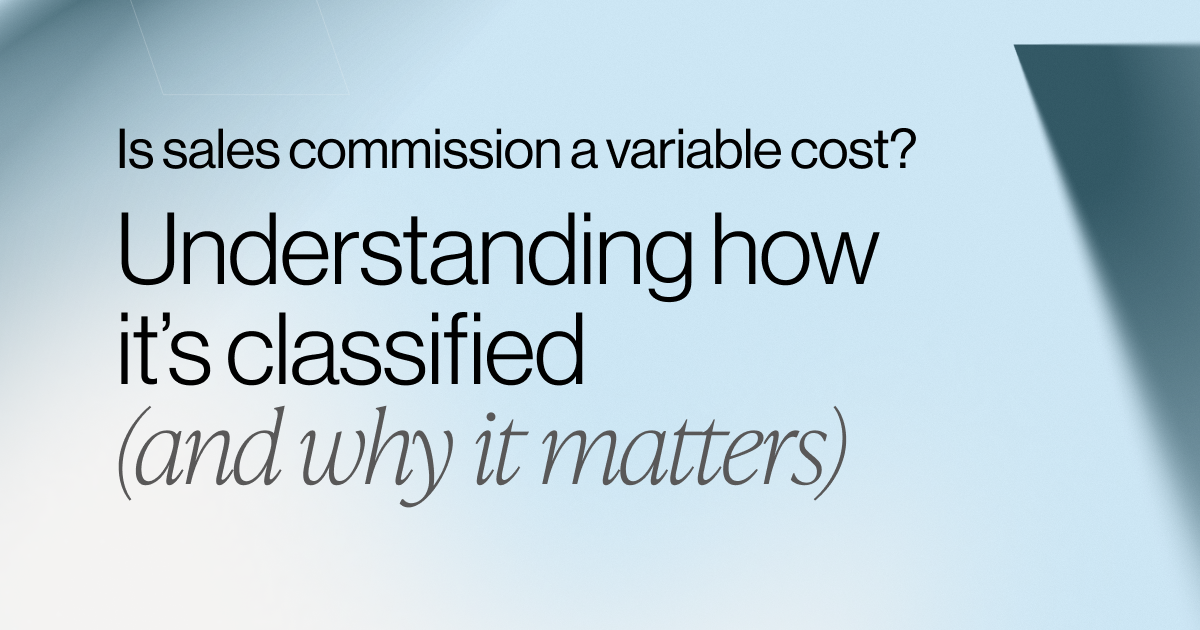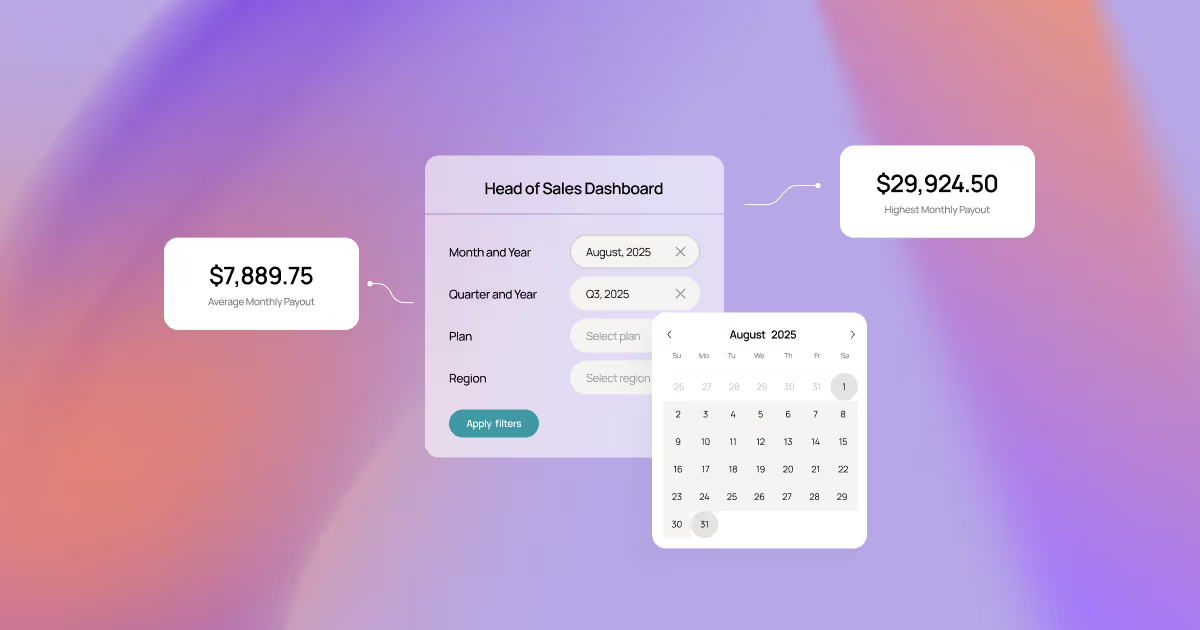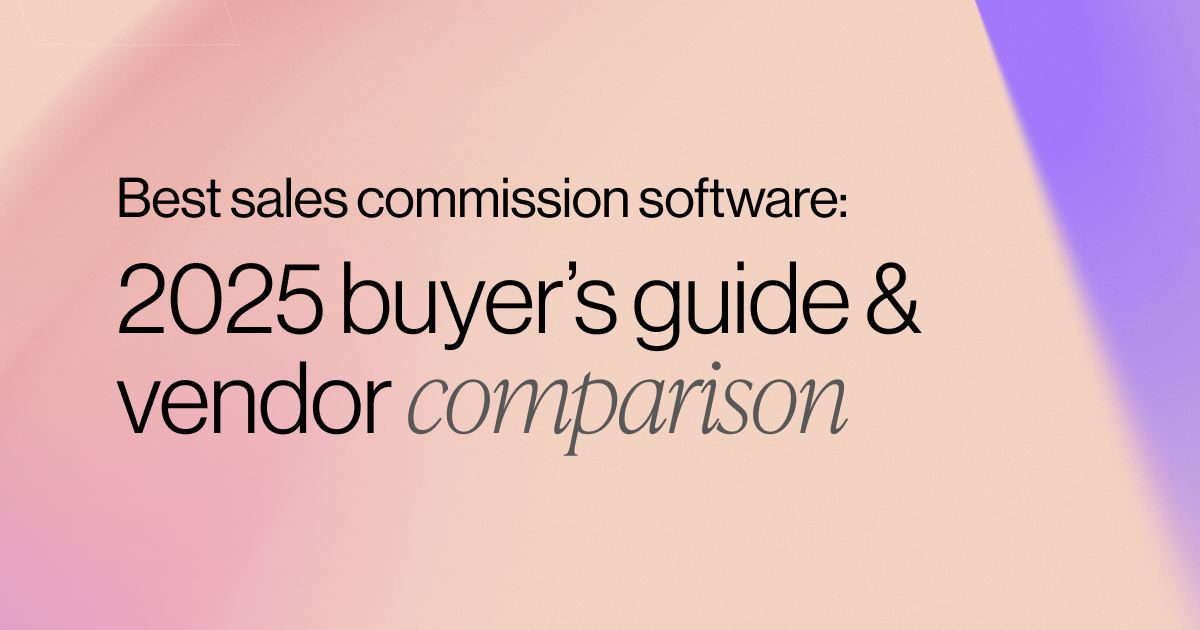How to Build Compensation Plans that Drive Business Results [Webinar Recap]
A masterfully-crafted sales compensation plan can be a powerful tool for driving business outcomes. But while a well-designed plan has the power to transform 9-to-5ers into passionate crusaders for company success, determining exactly which targets, levers, and incentives to implement can be a very complex process.
To better understand the ins and outs of successful compensation structures, we recently called in the experts — Rosalyn Santa Elena (Founder and CRO at the RevOps Collective) and Arni Khanna (Director of Solution Engineering at CaptivateIQ) — to discuss how every organization can create a plan that drives the right behaviors to meet their unique business needs.
If you get your compensation plan right, it can be the biggest differentiator to help keep [everyone] aligned to strategy. — Rosalyn
In this article, we highlight some of the common pitfalls and advantages to keep in mind while you build your sales compensation plans. Watch the on-demand webinar to get even more expert insights!
Avoid common compensation plan pitfalls
During the webcast, Arni discussed one mistake early-stage organizations often make: failing to align the compensation plan with the GTM strategy. According to Arni, younger companies “sometimes just add a compensation plan because they feel like they have to” — but he also says that’s a big mistake.
It’s crucial that businesses understand the “why” behind their sales compensation plans to ensure better alignment between strategy and execution — and drive meaningful results. Working backwards to determine your desired business outcomes before setting parameters will help you identify the specific behaviors you should incentivize and design your plan accordingly. Essentially, your desired business outcomes should be the north star.
Over-engineering is another common mistake according to Arni, who’s seen businesses face challenges after adding too many components and variables to their compensation plans. Too much complexity makes running calculations a hassle for admins — especially if there are multiple plans — and this can lead to an abundance of errors that impact payouts and reporting. In addition, a lack of transparency around how payouts are calculated and processed can have a negative impact on morale across the entire sales organization.
Rosalyn recalled a meeting she attended in 2001 where an experienced sales rep stood up during the sales kickoff to exclaim, “I have an MBA, and I can’t figure out my comp plan!” The story has stuck with her for over two decades now, highlighting the frustrations that come with juggling too many variables — and how important it is that a sales team truly understands the nuts and bolts of their compensation plans.
When plans are too subjective or open to frequent change, it can be easy for employees to lose focus and become unmotivated. On the other hand, an established plan with clearly-defined goals — one that reps feel invested in — will motivate employees to do their best work.
While avoiding these common mistakes may be the first step to getting your compensation plan off the ground, successful implementation requires a full team effort.
Inspire trust and drive results with clear communication
Ultimately, a sales compensation plan’s success boils down to how effectively it’s communicated. Once you’ve crafted the right plan for your business, your reps should have an understanding of the behaviors that will drive rewards (and in turn, business results). It’s also important to collect and consider feedback from the team to see where there may be misunderstandings or gaps that need to be addressed.
We often spend all this time designing the plan, yet sometimes forget to take the time to communicate to all participants. We need the RAH RAH. We need to demonstrate how feedback was received and incorporated, and further, how the plan ties to GTM strategy.
Arni also chimed in about the importance of communicating the “why” behind a compensation plan, saying “you must convey how the team has done its research and believes in what it wants reps to do.”
The keys to sustaining a successful compensation plan
Arni talked about how the companies “doing it right” often add scenario-based modeling to help motivate reps, but warned that this can really only be effective if it’s pulling from accurate data sources: “Be sure to think of the end result… [and make] sure you have good — correct! — data.”
Adding to Arni’s point, Rosalyn advised that organizations offer access to a compensation or “what if” calculator to help reps determine what their payouts might look like if they hit certain targets. This empowers reps to test out various scenarios — for instance, “If I close X deals, I’ll get paid $Y”, or, “If I close out my pipeline by the end of Q1, I can expect $Y” — and get a better understanding of what their potential earnings could be.
Arni also suggested considering the type of reporting you’d like to see — best performing region or individual rep results, for instance — and then slicing and dicing your data accordingly to better understand where you might need to make changes or invest in coaching or new resources.
Another important factor to consider is that it’s not just sales teams who touch and impact revenue — more and more organizations are tying compensation for marketing, customer success, operations, and other teams to their measurable business impact. As Arni shared, “many companies are moving towards a total revenue model.” More plans can mean more complexity, highlighting the need for flexible commission software that allows admins to add specific rules for multiple roles, and easily make adjustments where necessary.
Finally, it’s important to remember that compensation plans are not a box to be checked off once and be done with. Ideally, your team is regularly iterating towards improvement, gathering feedback and assessing performance to inform potential changes. As Rosalyn said, “We need to ensure plans are things reps can act on and influence!”
Watch the on-demand webinar, “5 Ingredients To A Compensation Plan That Drives Results In 2023,” for more insights.
.svg)








